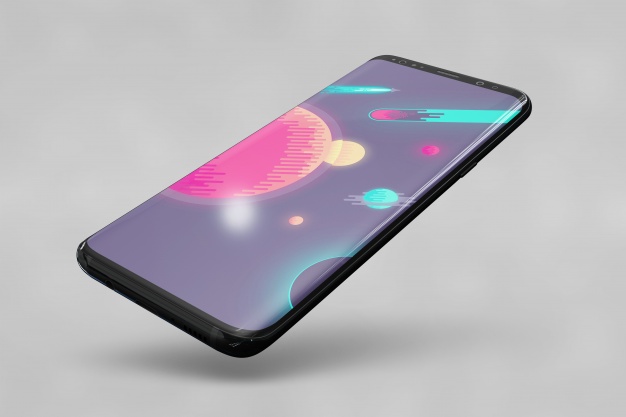OWASP Mobile Top 10 – A Good Way to Counter the Risks Associated With Mobile Application

The OWASP is considered to be a list that helps in identifying several kinds of security-related risks to mobile applications across the globe. The OWASP Top 10 Mobile list came in the year 2016 and is considered to be a great guide for all developers across the globe because it helps to provide proper access to coding-related practices. This list has to provide complete guidance about 10 kinds of risks that have been marked from M1-M10.
The complete bifurcation of M1-M 10 has been mentioned as follows
M1: The usage of improper platforms
This kind of risk involves the misusing of the operating systems and can further include the risk for example data leakage by the Android intent, iOS key chain risks, touch ID risks, intent sniffing, and several other associated aspects. The best practices to avoid such risks are to go with the option of sniffing-based practices, android intent practices, and keychain best practices.
M2: The storage of insecure data
This aspect of the OWASP list informed the developer community about the easy ways that will help in assessing the insecure data on a mobile device. The risks associated can include compromised file systems and exploitation of the data. The best practice to avoid such risks is to use debug Bridge along with goat iOS.
M3: The insecure communication
This kind of risk includes the developer-related aspects from a single mobile application to others. This can include the stealing of information, man-in-the-middle attacks, and account compromises. The best practices to avoid such risks can include having a proper networking leader, watching out for leakage in a timely, avoiding SSL sessions, using strong industry-standard Best practices, using the certificates, ensuring a proper and secure connection, and not sending sensitive data to other applications, et cetera.
M4: The insecure authentication
This problem will occur when the mobile device fails to recognize the user correctly and can lead to several issues. The risks associated with it can include the insecure credentials of users and import form factors. The best practices to avoid this can include following security protocols, utilizing online authentication methods, persistent authentication requests, having a device-centric organization approach, avoiding unauthorized physical access, utilizing alphanumeric characters, et cetera.
M5: The insufficient cryptography
The data and mobile applications can become very weak because of the encryption processes and the risks associated with this point can include stealing of application and user data, assessing the encrypted files, and several other associated things. The best practices can include utilizing modern encryption algorithms, taking good care of vulnerabilities, recommending encryption algorithms, and keeping an eye on the documents with emerging threats.
M6: The insecure authorization
Under this point, the developer should always make sure that unauthorized and insecure authorization will involve several kinds of adverse taking advantage of the vulnerabilities. The risks associated can include unregulated access to admin and points, IDOR Access, and identifying all the leakages associated with the whole operating systems. The Best practices include continuing testing the user privileges with the help of running tokens for sensitive commands, understanding the user authorization scheme, especially in the off-line mode, and conducting proper authorization checks for the roles and permissions at the time of using the mobile devices.
M7: The poor quality of codes
The M7 point deals with the poor quality of codes along with inconsistent practices associated with coding. It lays proper focus on that available should follow proper and consistent practices that are uniform with all other companies as well. The poor quality risks and include the safe web code, lacuna in third-party libraries, Client input in security which can lead to providing proper access to the unsecured information. The best practices can include having a mobile-specific code, conducting a static-based analysis, having library versions, and undertaking code Logix. It should also be a proper focus on the content providers so that permission flags are always used to stop unauthorized access.
M8: The tempering with codes
A lot of hackers also go with the option of tampering with the applications to have other forms of manipulation so that they can gain unauthorized access to the applications. The risks associated with it can include malware infusion, data theft, and other associated risks. The best practices include checksum changes, data erasure, and runtime detection. In all these cases the developers will have complete Information about the tempering of codes and coding cases.
M9: Reverse engineering
The concept of reverse engineering utilizes several kinds of mobile codes so that hackers can use the external commonly available by the reinsertion tones. The risks associated with this can include dynamic inspection at renting, stealing of course, and accessing the premium features of the applications. The best practices to avoid this concept are to use similar tools and conduct proper code obfuscation. Another good way to prevent such risks is to utilize C languages very well so that manipulation can be prevented to a large extent.
M 10: The extraneous functionalities
Just before the application is ready for launch and production developers also go with the option of conducting proper functionalities in the extraneous matters. The main risks of extraneous functionality can include information related to the databases, user-related permissions, endpoints, disabling the functionalities, and several other things. So, to avoid these kinds of extraneous functionality the best practices include ensuring that none of the tests is present in the final build, there are no hidden switches, logs are not descriptive, the phone system logs are not exposed, adversity cannot set the debug flag and endpoints are easily accessed by the applications.
Hence, comprehensive security solutions must be implemented so that the organization and the mobile applications can be completely protected from the OWASP mobile top 10 threats. It also helps to provide a complete dashboard to the businesses so that potential threats can be analyzed and proper measures can be taken to protect them in real time.




























































